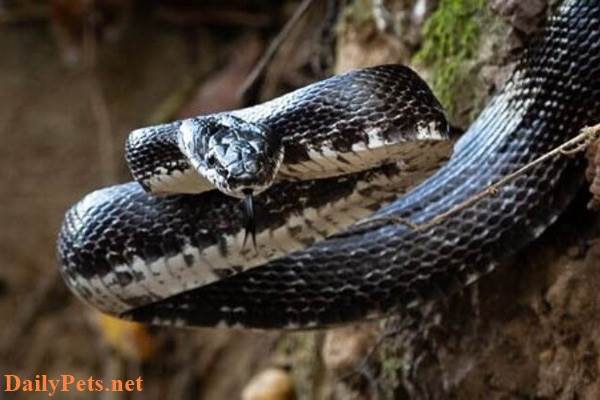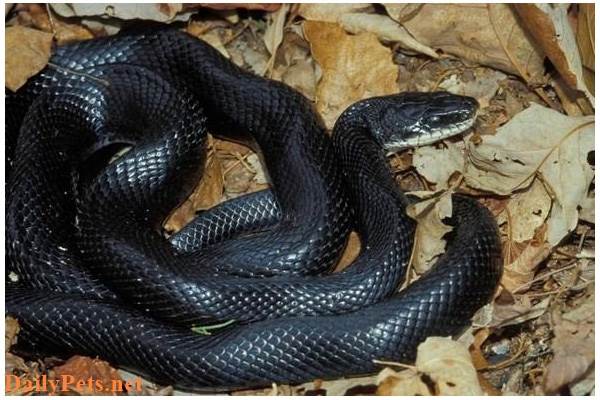Rat Snakes live in many environments. There are about 50 species of Rat Snakes spread across 15 genera. Thanks to their amazing ability to hunt rodents, they are not poisonous and are useful friends to farmers.
You can find this Snake in most areas of the Northern Hemisphere, each with different colors and patterns. Let’s learn more about Rat Snakes with DailyPets.net in the article below!
Where does the Rat Snake live?
This snake lives mainly in areas of the Northern Hemisphere. They live in various habitats, including dense tropical forests, semi-arid fields, farmland, and arid deserts. Besides, Rat Snakes are often found in odd places like roofs or climbing brick walls. They are excellent climbers and often climb trees, fences, and other obstacles to hunt.

They are active hunters during the day. Their favorite foods are rodents, including rats, mice, squirrels, and chipmunks. Baby snakes occasionally eat lizards, but adults almost exclusively prefer warm-blooded prey.
The scientific name of Rat Snake
Rat snakes belong to the suborder Colubrinae in the family Colubridae. Colubridae is the largest family of snakes, about 75% of all snake species. Several species have recently been reclassified from Elaphe into other genera, including Pantherophis, Orthiophis, and Zamenis.

Until the early 2000s, scientists included most of them in the genus Elaphe, believing they were all closely related. However, when they analyzed the DNA of several New World and Old World species, they discovered it was more complex than they realized. Not all Old World and New World species are closely related, and the New World Rat Snake is more closely related to the king snake than the Old World Rat Snake.
Rat Snakes: Number and Conservation
Several species of Rat Snakes are listed on the IUCN Red List as vulnerable or endangered, such as E. Teniura and E. Perlacea. However, the IUCN Red List states that most species have stable populations.
The main threats of Rat Snakes vary depending on where they live. This snake faces threats of habitat encroachment, being hunted by humans, and being hit by vehicles. In some areas, weather factors such as storms and floods threaten to reduce the number of Rat Snake species.
In addition, Rat Snakes are also preyed upon by many animals, including weasels, badgers, birds of prey, coyotes, and other snakes.
Rat Snake Identification: Appearance and Description
These snakes are medium to large, sometimes very long, and somewhat slender. They are snakes of the Colubridae family and kill their prey by squeezing until suffocation. Rat Snakes range in length from 3 feet to over 9 feet. With their length and slender bodies, they often crawl into cracks or crevices in walls to move from one place to another.

In most species, the head of the Rat Snake is shaped like a turtle; some have a pattern on the top of the head. Many species have a lighter base color with darker shield-shaped patterns running the back length. Of course, not all Rat Snakes have the above characteristics, but that is enough for you to recognize this snake.
How dangerous is the Rat Snake?
These are not dangerous to humans. Although some Old World Rat Snakes have very mild venom in their mouths, it is not enough to be dangerous to humans. However, they have sharp teeth, so their bite is very painful and can cause bleeding or infection if not properly treated and treated.
Sometimes, Rat Snakes get into chicken coops to eat eggs and chicks, so some people aren’t excited to see them. Therefore, many farmers do not like this snake at all.
Behavioral characteristics of Rat Snakes
Many species have adapted well to humans and hide under houses, in attics, and around yards. Rat Snakes are active hunters during the day. However, some are very flexible and hunt in the early evening and morning hours.
Rat Snakes are named after their favorite food, which is rats. However, they often come into the chicken coop to eat eggs and chicks. This makes farmers both like and hate this snake.
Four interesting facts about Rat Snakes
- There are more than 50 species spread over most of the Northern Hemisphere.
- Some species can grow more than 9 feet long.
- These snakes are named after their favorite prey, the rat.
- New World Rat Snakes are more closely related to king snakes than Old World Rat Snakes.















